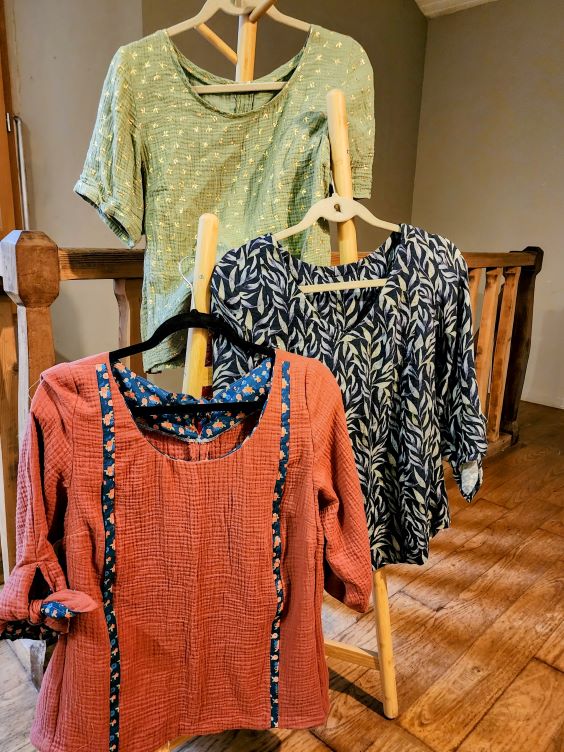
Here are Fit for Art’s Tips for cutting and sewing Double Gauze for cool tops. Because this fabric is one of Rae’s daughter’s favorites, she has been stitching up Carpe Diems for Anna for 3 years, including during her maternity and nursing days.

Double gauze is a double faced fine cotton fabric. The layers are connected in the weaving process so while its elements are very fine and thin, it has some loft and essentially no drape.
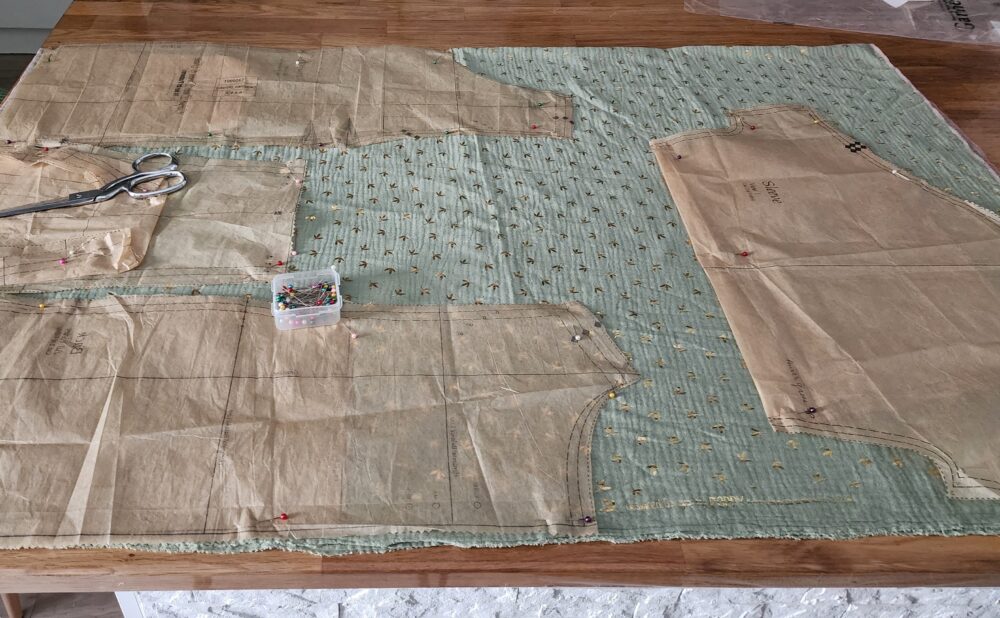
- Because it is 100% cotton, it is essential to prewash by the same method you plan to use when the garment is finished. Be forewarned that the fabric will draw up and crinkle, making it seem much smaller than the yardage you originally ordered. There might be some shrinkage, but you can press out the crinkles when pressing the seams during construction so the garment doesn’t get all out of whack. Press especially well along the selvages, which get really crinkly.
- Choose designs that are not too form fitting such as the Carpe Diem Top or Shirt Variations for the Tabula Rasa Jacket.
- Before cutting, press well again. When resting the fabric pulls up but it will stretch again when wearing, so work with the pressed-out fabric.
- Anchor pattern pieces well with fine pins or weights. It can shift about on the table
- It has a tendency to snag, so use very fine sewing pins and a fine universal needle. A size 70 or 80 machine needle is recommended.
- Make a sample seam to check whether a walking foot is needed.
- If you think you might need to release a seam, use a slightly lighter or darker thread than a perfect match. Stitches are very hard to see on this fabric.
- Use a wide enough seam, ⅝” is perfect, so adjustments can be made. Press seams open if possible to keep the volume down. Start seams a few stitches inside the edge of the fabric, then reverse. Seams begun right at the outer edge can get caught up the machine.
- Give seams a clean finish as the fabric can be ravelly. A three thread overlock or a zigzag will work great, or even french seams.
- Staystitch around any neckline edge to avoid stretching, which is not unusual in loosely woven fabrics.
- Anchor shoulder seams with a strip of interfacing. Interface facings and consider using a contrast plain woven fabric as the facing or binding to minimize bulk.
- Press lightly through construction.
- If you like a crisp edge, topstitch.
- Hand stitched hems are really lovely; with all the layers and crinkles, the stitches are invisible.
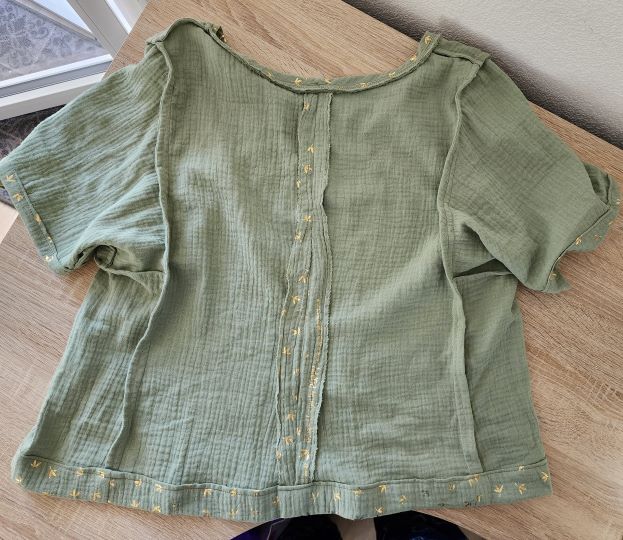

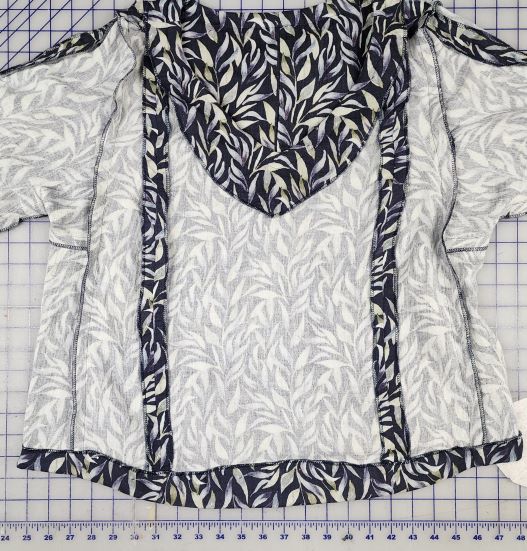
Choose a soft but not wimpy interfacing if needed. This double gauze shirt variation made for nursing has an envy silk interfacing.
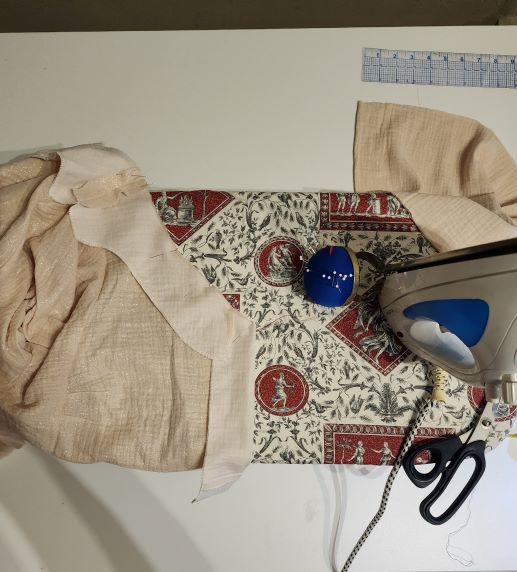
Double gauze is currently the darling of the baby industry, used for sleep sacks, covers for changing tables, and clothing to note a few uses.
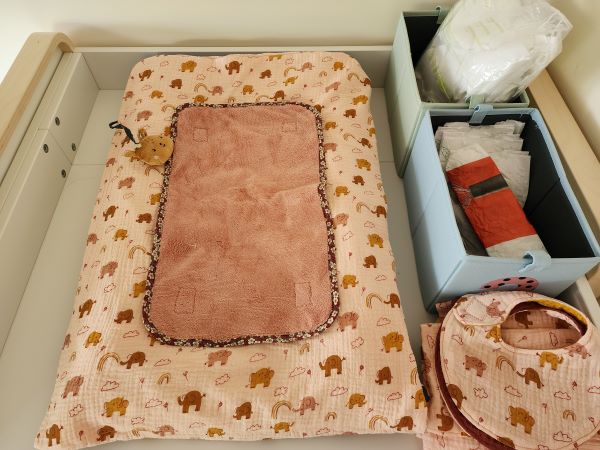
That means it is available in many different colors, metallic glazes, and prints. There is a nice selection at Style Maker Fabrics where some of the fabrics for Anna’s maternity and nursing tops came from. Any reputable online fabric store and quilt store will have a variety to choose from.
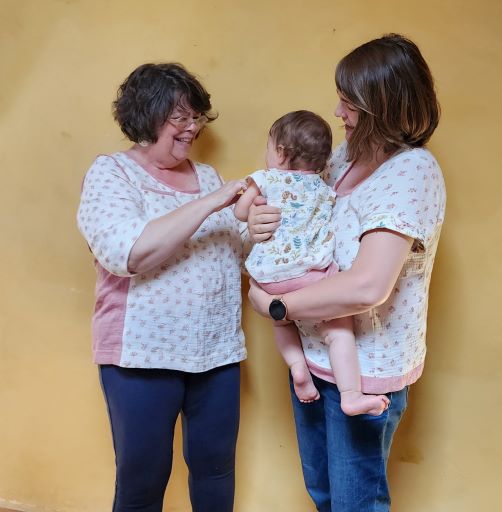
Mix and match some solids and prints for a coordinating set of tops for mom and nana and a shorts outfit for the little one.
Keep an eye on the social media to see some of Carrie’s double gauze for cool tops creations.
Happy Sewing, Rae and Carrie







I am sewing the carpe diem dress/tunic using the cap sleeve option and shortening the length to make a cropped top. I’m now inserting the invisible zipper and cannot find helpful hints on sewing the invisible zipper on the dress; I found instructions for the pants but when I searched for the dress results yielded zero. I have inserted many invisible zippers but different garments have tweaks geared towards the style. It would be nice to have reassurance on sewing the top where a facing is used to make this a smooth and professional looking garment. I assume I put the zipper pull 5/8 from the top and have it go half to three quarters of the length of the back. Thank you for any help.
Hi Eileen, Thanks for your question about inserting an invisible zipper into the back of the Carpe Diem. We are sorry you have not found the resources you desire and perhaps we will create a blog post about putting zippers into a dress or tunic in the future. In the Helpful Hints tab on the website there is a tab for each core pattern and under dresses we have Sarah Veblen’s very detailed directions on inserting invisible zippers which works great in either pants or a dress. Perhaps it is not the method you use and you can also insert the zipper so it sits 5/8″ down as you reference. Use that method if necessary, but I wonder if you need a zipper in a cropped top with a cap sleeve. We consider that the zipper opening will be used then the dress is long and fitted through the waist making it important to have an opening to enter the dress. Feel free to contact me if you would like more information and we will discuss dress openings in a future blog post.
Thank you! I finished my capped sleeve top and just love it. I do need the zipper space as the fabric is woven and not knit. I will look up the reference you mentioned for future use. Thanks again.
great news Eileen. Let us know how it goes!
Should I interface collars, etc. when using Double Gauze? I find that Ready-To-Wear often does not use interfacing? I would, of course, use very light weight interfacing and perhaps only a Sew-In. Wouldn’t want to iron out the wrinkles.
Hi Virginia, When putting a facing on the garment, we fuse a light weight interfacing to the facing pieces in order to support the seam, particularly along the neckline which gets a lot of wear and pulling. Fusing the interfacing to the facing reduces its loft and wrinkly character, which we find acceptable because it also reduces the bulk. While I haven’t yet sewn a double gauze garment with a collar, I would be inclined to interface the undercollar, or even choose a coordinating cotton fabric (that isn’t double gauze) to give the collar shape and support. Let us know how your project turns out! Carrie